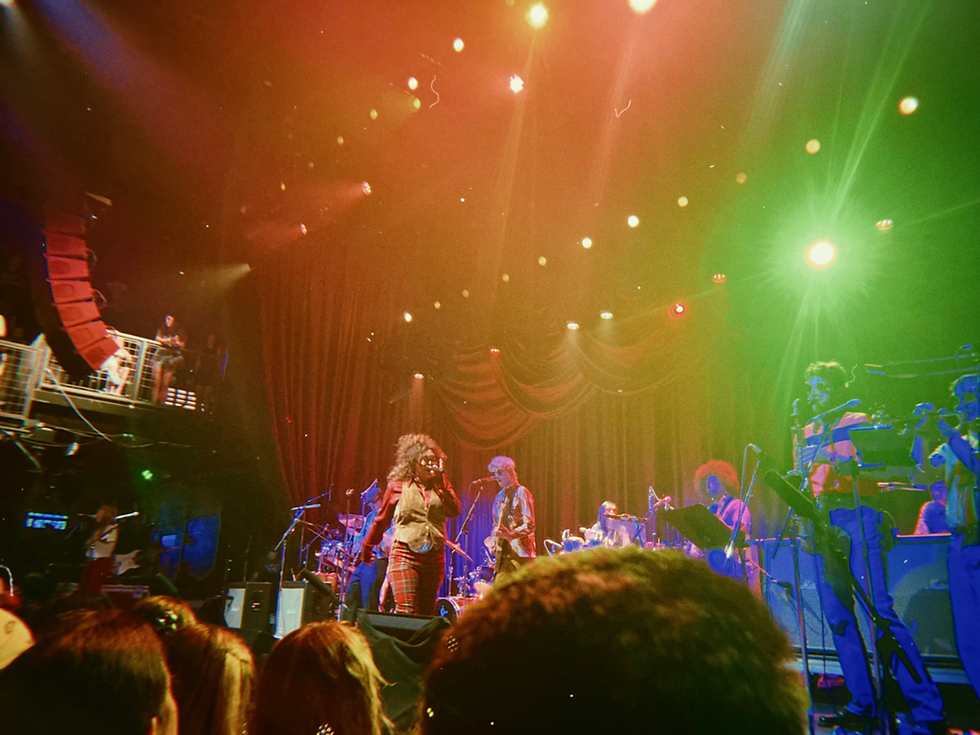Does Art Always Need a Reason?
- Andrew Doucette
- Sep 4, 2020
- 6 min read

Art has long been a medium for people to take these abstract and seemingly indescribable feelings that we all feel into something more concrete. It tells a story; whether it’s love, excerpts from their personal life, or something completely fictional. It helps us as people learn more about what other people go through in their daily lives. I will never know what it’s like to be a Black woman from the UK, but listening to people like Jorja Smith, FKA twigs, and Little Simz gives me an idea of what it’s like and the struggles they have to go through.
Music and literature are especially helpful for learning about other cultures, but music easily takes the cake when it comes to transmitting emotion. There’s something about the soundscape that artists can create that immediately brings you into their world like nothing else can. Even something as simple as 2 Chainz’s “Riverdale Rd” has these menacing synths and deep 808s that makes it sound dangerous, similar to how 2 Chainz’s describes his upbringing in the trap houses of Atlanta. Kendrick Lamar’s storytelling in “The Art of Peer Pressure” shows the immense difference of falling into peer pressure in Compton vs in most of our suburban lives. Here, peer pressure would be to do something dumb, like jump off a high rock into the freezing lake or eating something disgusting your friends have concocted. In “The Art of Peer Pressure”, the pressure from Kendricks’ friends is being violent and robbing a house. The eerie and minimalistic instrumental gives Kendrick the room he needs to fill the void with his detailed story.
While music always seems to have some sort of meaning, even if it’s just having fun, does it have to? Is there some fundamental reason behind music that every song and album has to have some sort of meaning behind it, or can it just be art for the sake of art? The one artist that embodies these questions the most is Childish Gambino.
Earlier this year, Childish Gambino released his supposed final album, 3.15.20, with one of the weirdest rollouts I’ve ever seen. He live streamed the album on his website for 12 hours before taking it down, and it officially came out a week later. When it did come out, it left everyone in a state of dismay. The majority of the track names were just their respective timestamps in the album, the cover was an all white square (pictured below), and the title was just the date he originally premiered it on the website.

For someone who had always seemed so calculated with his music, 3.15.20’s rollout left fans bewildered. Even after listening to it close to 40 times, I still don’t know what it’s about or supposed to be saying. There are themes of breaking the “algorithm” that we’re all following as a society. That we should be questioning the powers and institutions that we’ve trusted for so long. There are themes of how Gambino is learning to live after losing his father, and the lessons that he wants to pass on to his children. He also looks at other types of love on quite a few tracks as well.
That confusion is something that doesn’t happen very often, if ever. Most of the time, the themes become clearer the more you listen to a project. It may only take one listen sometimes. Kendrick’s 2012 album Good Kid Maad City is an easily accessible story about Kendrick's childhood that you can understand a lot from the first listen. Sometimes they take quite a few listens to get, like clipping’s Splendor & Misery. You may be able to get that it’s a concept album about an intergalactic slave ship on first listen, but the fact that it’s told through the perspective of the computer and how all the themes relate to real life takes many listens to understand it. You can feel the web untangling as you dig deeper into that album, but that doesn’t happen with 3.15.20. Instead of becoming untangled, you just learn more about the knots.
In a way, you can argue that the album is symbolic of life. Life isn’t something that you are able to fully untangle and figure out, but rather, you have to learn enough about the knots to figure out how to find happiness with the cards that you’ve been dealt. There’s no right answer of how to live, you have to find your own, which is what I think 3.15.20 is going for. It’s about whatever you want it to be. It can be about society, or love, or loss, or anything else you want it to be. It’s a blank canvas for you to paint your thoughts.
Does this mean that this is the “right” answer for what the album is about, no. Unfortunately, we’ll never know, as Donald doesn’t like to explain what his art means. But that’s the point of art in his opinion. In an interview with The Breakfast Club in 2013, he explained why he never shares the meaning behind his art, “I'm not gonna explain my art cause like, that's not what art’s supposed to do. Like it's supposed to be a conversation [starter]”.
But it’s what he says else in this interview that really explains where he comes from, “Music doesn’t mean anything. It means as much as we can put into it, and we don’t have time to put anything into it.” That second part is what’s really interesting to think about, do we really have enough time to fully digest music in the way that art is supposed to be digested? I think we do, but we just choose not to.
For example, it’s crazy to me that we don’t engage and talk about the art that we just consumed. Everytime I went to a movie theatre with anyone, we always exit the movie and never talk about what we just spent two hours consuming besides to maybe say it was good. What’s the purpose of watching something if you don’t end up discussing it? They don’t even have to be serious movies to be dissected. Let's take the newest Jumanji movie for example. There’s so many things to talk about, like about how accurately it portrays video games, if the body switching water is necessary or was just a cheap ploy to return the characters to the same bodies as the first movie, or what about how the real life group handled the situation of finding out one of their best friends went back into this hell. Heck, even something as simple as favorite or least favorite parts of the movie is something that’s worthy of a discussion, but most of us don’t even want to talk about that. It doesn’t even have to be for the art’s sake, the discussion helps connect people to each other.
This also applies to any other types of art, including music, television, books, art museums, and more. If we don’t have these conversations, or take any time at all towards the art that we consume, what’s the purpose of even having art? Most people seem to only use art as a distraction now instead of actually engaging with it, so what’s the point of putting any actual thought into your work if the number of people truly engaging with it is increasingly miniscule. Can we actually blame artists if there’s no meaning in their art? Are we so numb to consuming art that the artist literally has to murder a church choir and dance during the apocalypse for the majority of people to look at it critically?
We don’t have an actual reason to be disappointed if the art is supposed to be meaningless, we’ve done it to ourselves as listeners. Like Gambino says above, there has to be a relationship from how much the artist puts into and how much the listener puts into consuming it. So if the majority of listeners have stopped doing their part, we shouldn’t expect the artist to put intricate meanings into their work.
It’s why even when we don’t know the intention behind the music, it’s the speculation that makes art worthwhile. I may think that 3.15.20 is about Gambino learning to live life to the fullest after losing his father, but we’ll never know for sure what it’s about. That curiosity and ambiguity is what makes art so compelling, that anything can mean anything to anyone. We as listeners have to get back to absorbing art critically instead of passively using art as a distraction. Art can enhance our lives if we let it, and we need to start letting it back in.



Comments